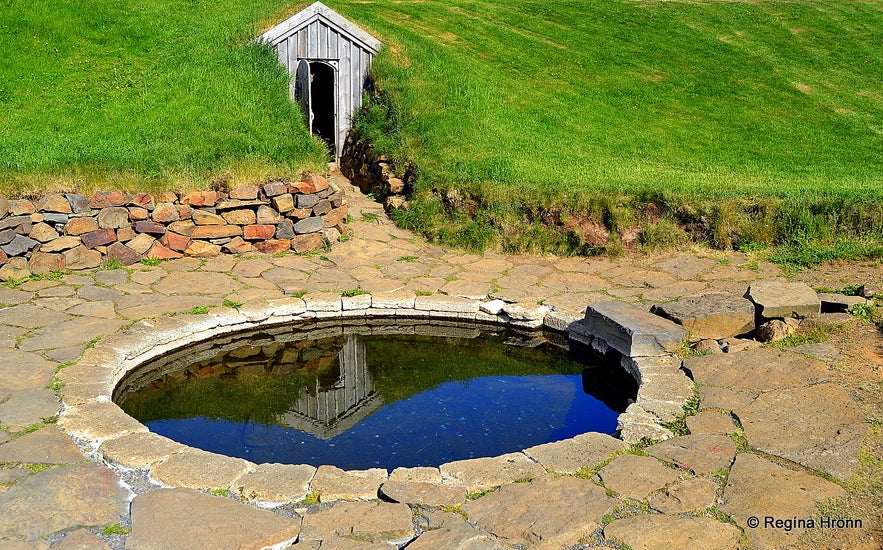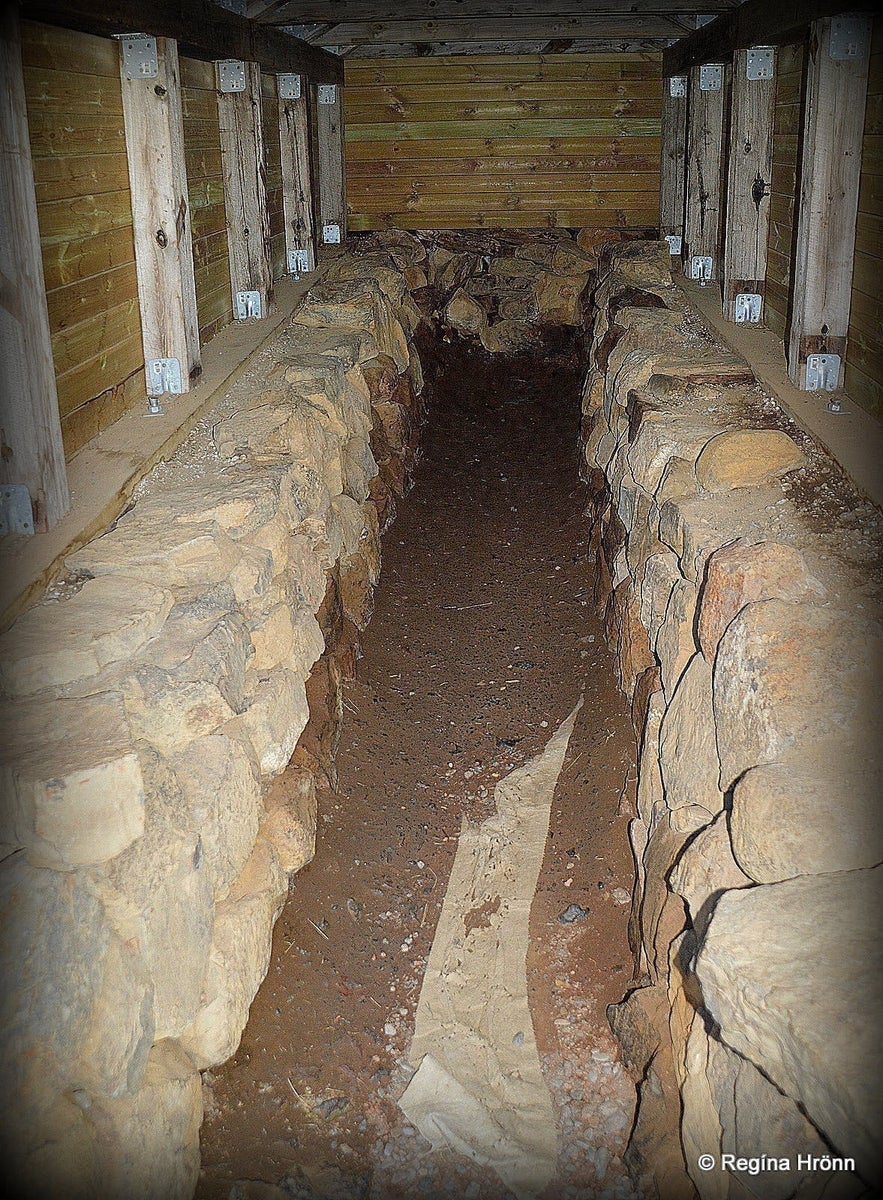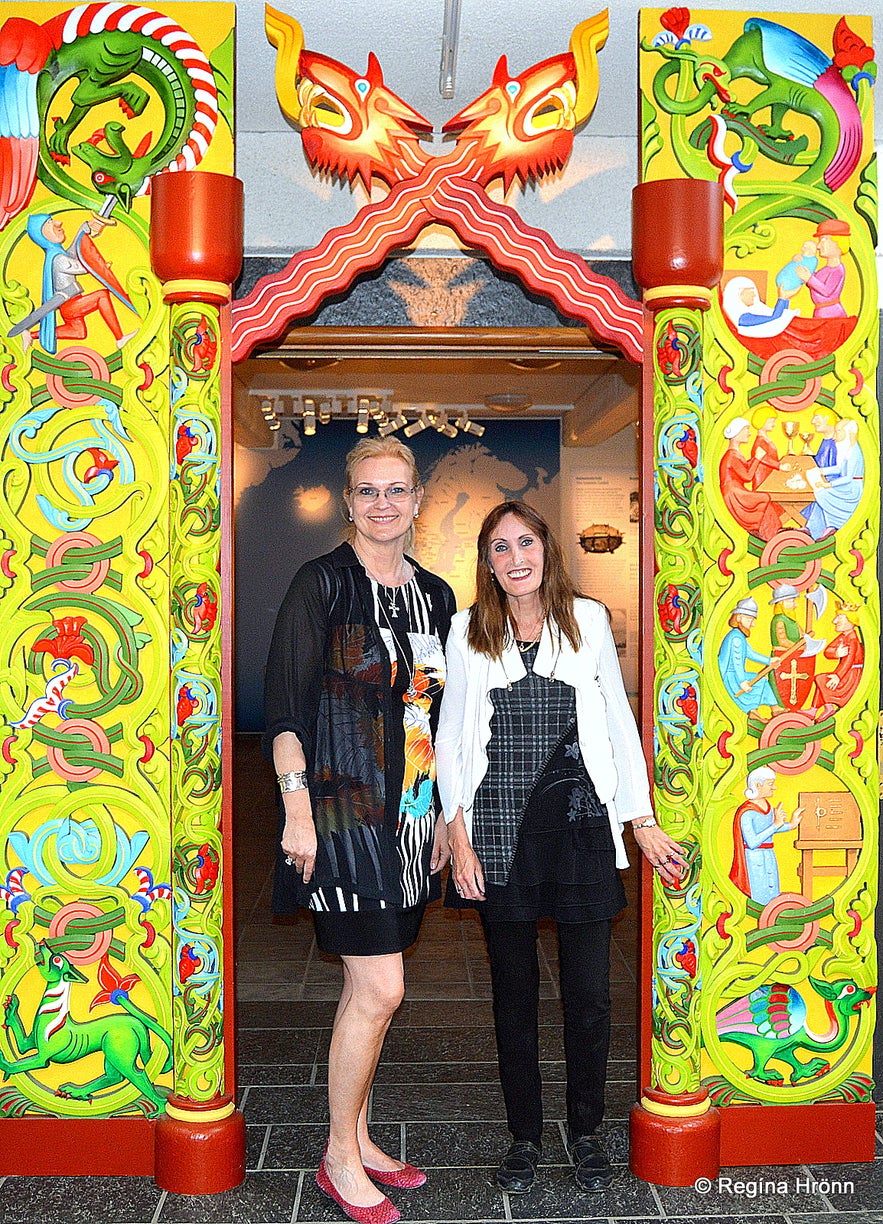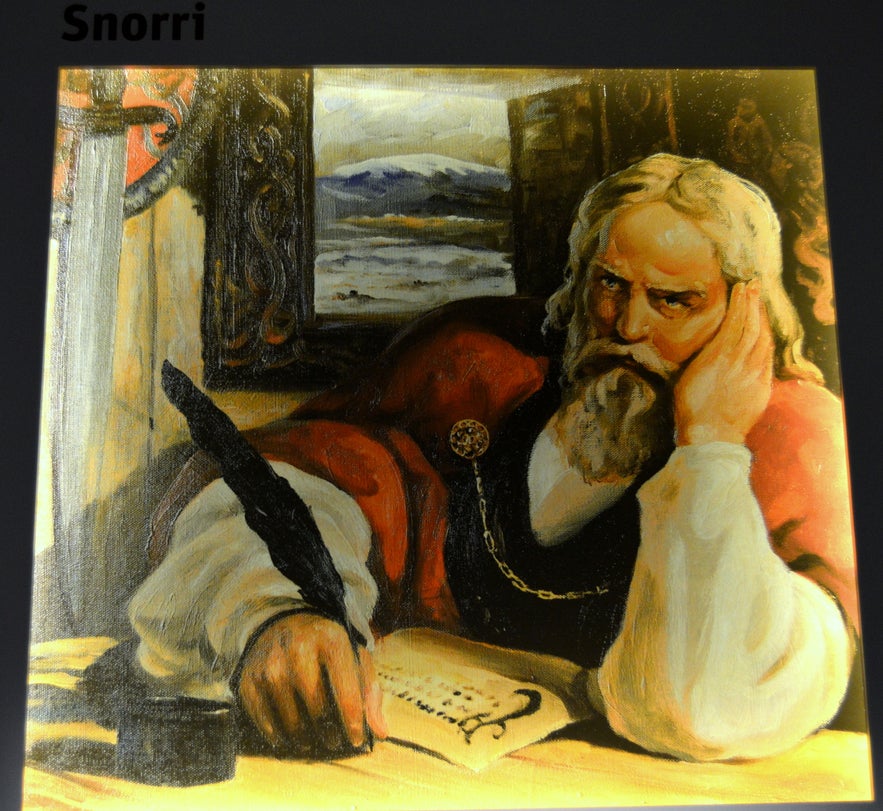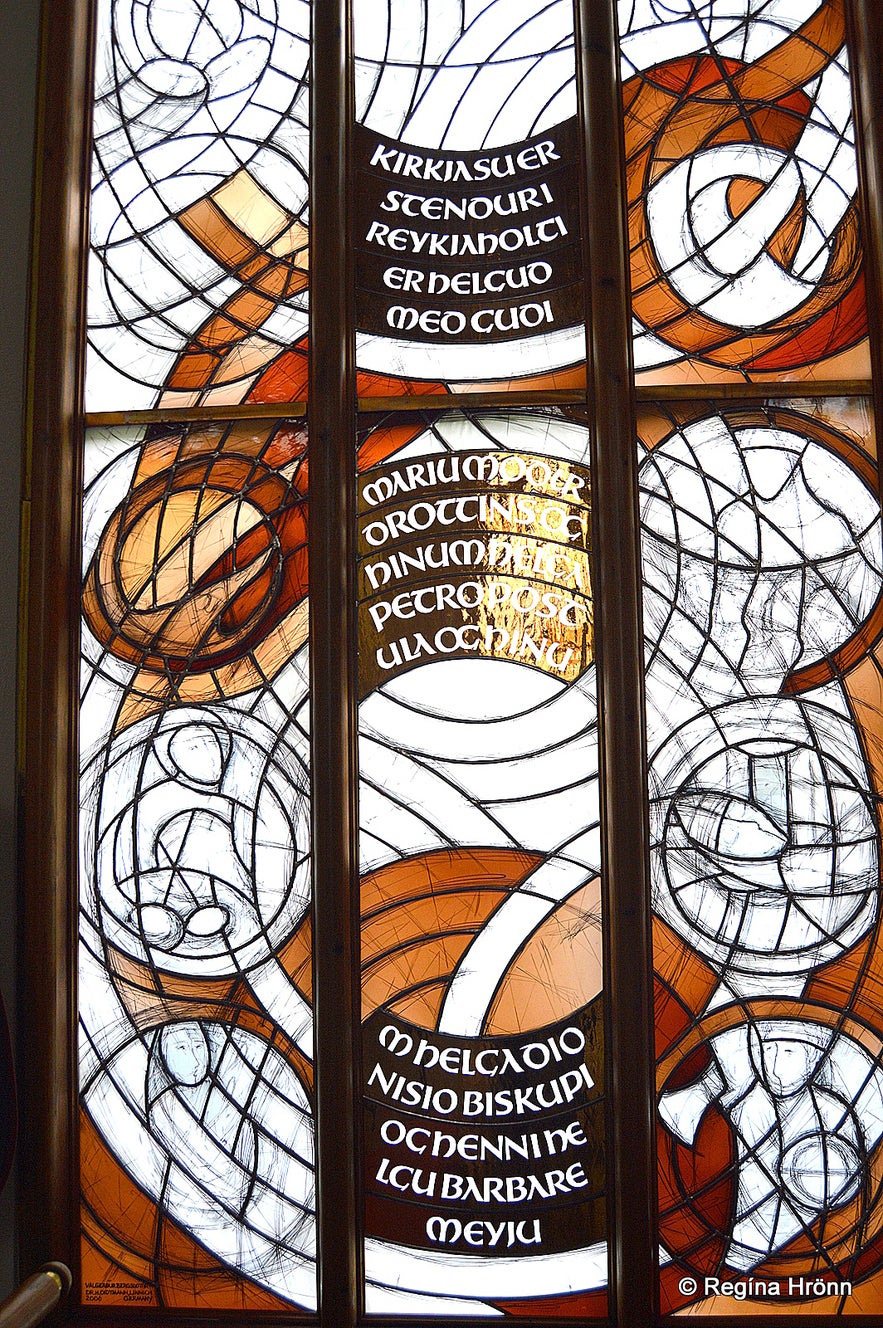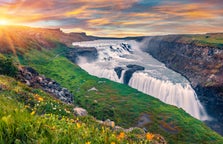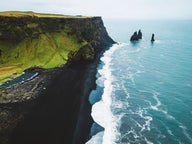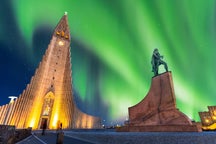
In this travel-blog, I want to tell you about Reykholt in West Iceland, which is one of the most historically significant sites in Iceland.
Reykholt was the home of Snorri Sturluson (1179-1241) from 1206-1241. Snorri was quite possibly the most influential Icelander ever. He was a Saga writer, politician, historiographer, and poet.
Top photo: the 2 Reykholtskirkjur churches at Reykholt
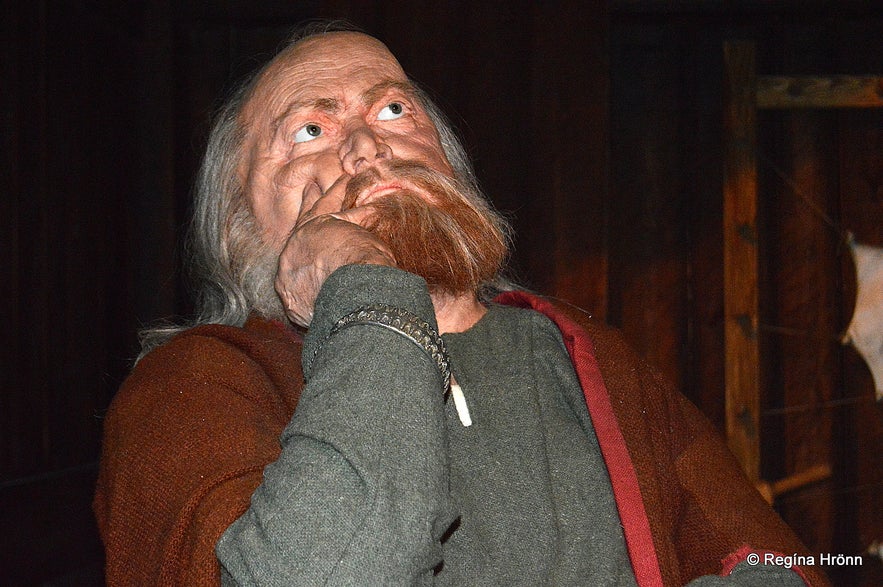
Snorri Sturluson as depicted at the Saga Museum in Reykjavík
Snorri was a chieftain and one of the richest men in Iceland during the Sturlungaöld - the Sturlung Age, and the most powerful man in Iceland.
He held the power of 11 chieftainships and had a revenue of 100 farms in Iceland.
Reykholt was an ecclesiastical and cultural centre in medieval times and an educational centre.
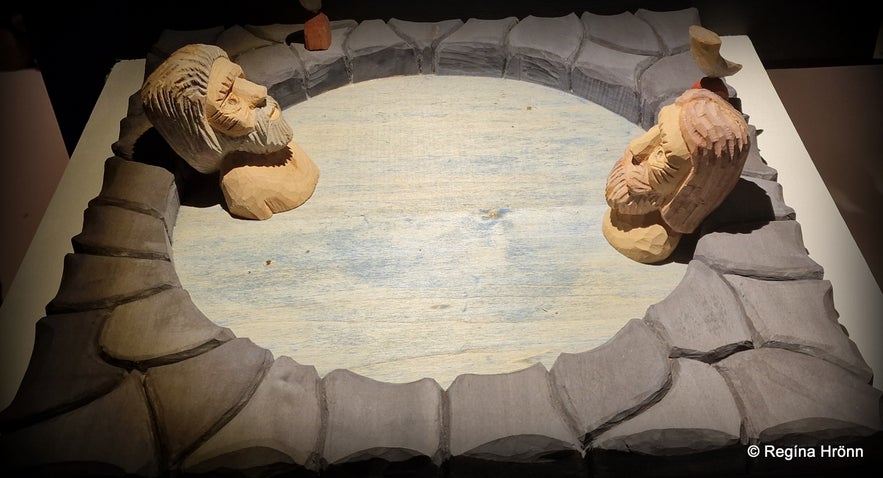 Snorri in his hot pot as depicted at Kakalaskáli in North Iceland - artwork by Sigurður Petersen
Snorri in his hot pot as depicted at Kakalaskáli in North Iceland - artwork by Sigurður Petersen
Snorri was Iceland's greatest Saga writer and the author of Heimskringla, the history of the Norwegian kings, Prose-Edda, with information about Nordic mythology and poetry, and he is also believed to be the writer of Egils Saga, the saga of Egill Skallagrímsson.
Snorri was influential in preserving the Norse cultural heritage through his extraordinary work.
Snorri has been called the Homer of the North. He wrote in Icelandic, not in Latin, which was the more common practice. And he wrote all his work on calfskin.
Just imagine how much calfskin was needed for all of his work. I have been told that Snorri bought 200 calfskins for Heimskringla!
Snorralaug at Reykholt
Snorralaug - Snorri's bath in Reykholt is the warm outdoor bathing pool of Snorri Sturluson and one of the first archaeological remains to be listed in Iceland in 1817.
This bath of Snorri is among the best-known heritage sites in Iceland. Þjóðminjasafnið - the National Museum of Iceland reconstructed Snorralaug in 1959.
The pool was first mentioned in Landnáma - the Book of Settlements - written around 1200, where it says that the hot pool was in use already in the 10th century, but at that time nobody was living at Reykholt. Snorri moved here in the 13th century.
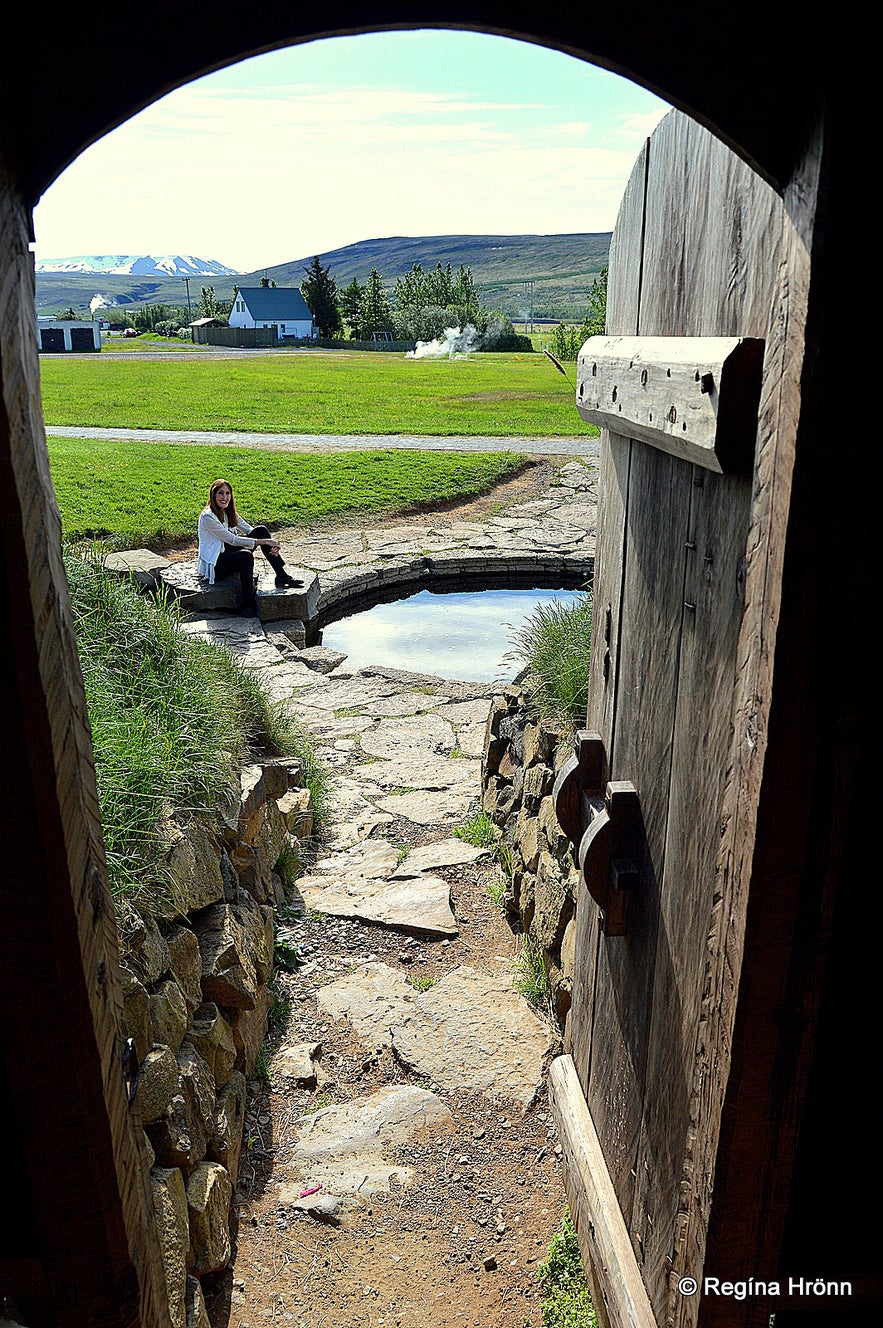
The underground passage leads to the hot pool
In Snorri Sturluson's time, an underground passage led from the farmhouse to the pool. In Sturlunga Saga - one of our Sagas - pictures Snorri sitting in his hot pool and having a conversation with his friends. This happened in 1228.
I love this image, Snorri chatting with his friends in the pool probably wearing a linen caftan :)
The hot pool is around 3.70-3.90 m in diameter and 0.7-1 m deep and there is a circular rim, and a bench, alongside the walls, where Snorri would sit, alone or with his friends and family.
The underground passage at Reykholt
A small lodge covers a part of the passage leading to the pool. It is only there to preserve the archaeological remains of the passage, not to show us what it looked like. This passage was discovered in 1930 during the construction of the school, which is now next to the pool.
It is possible to walk into a part of the passage and have a look. The passage was some 30 meters long and led to the farmstead. In my opinion, a rope should close the passage so that people know that it is archaeological remains.
I once saw a group of tourists who were really happy about finding a small hut where they could have a picnic. They were unaware of the fact that they were inside archaeological remains.
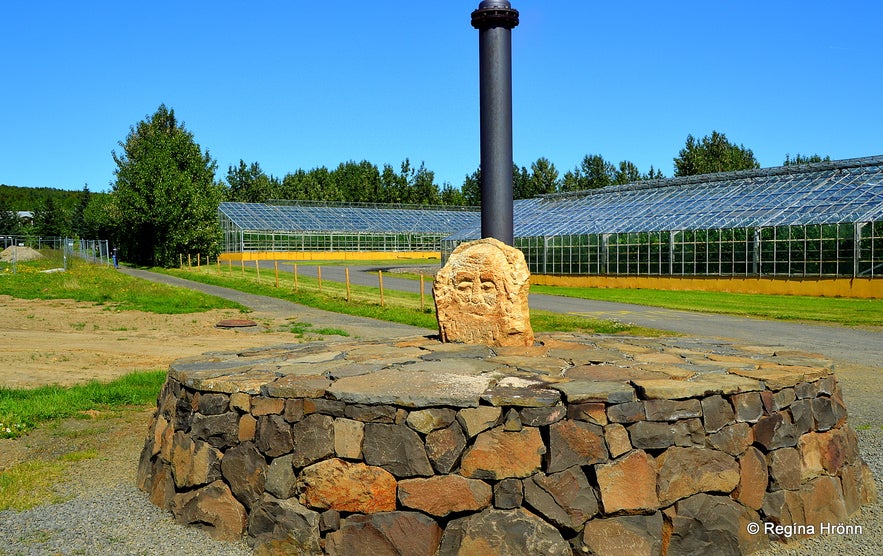
The hot-spring Skrifla
Hot water is supplied to it via a stone-built conduit from the hot-spring Skrifla, which is close by. The hot spring has now been tastefully closed with a rock cover and artwork by Páll Guðmundsson at Húsafell has been put on top - the face of Snorri Sturluson carved into a rock.
These archaeological remains should be treated with utter respect and care. To me, it is amazing to be able to sit by the reconstructed hot pool of Snorri Sturluson. Money has been thrown into the pool, as in so many other places in Iceland, which is not allowed.
There is also no bathing in it! It makes me sad that some people don't show respect here or maybe don't realize what a treasure this pool is.
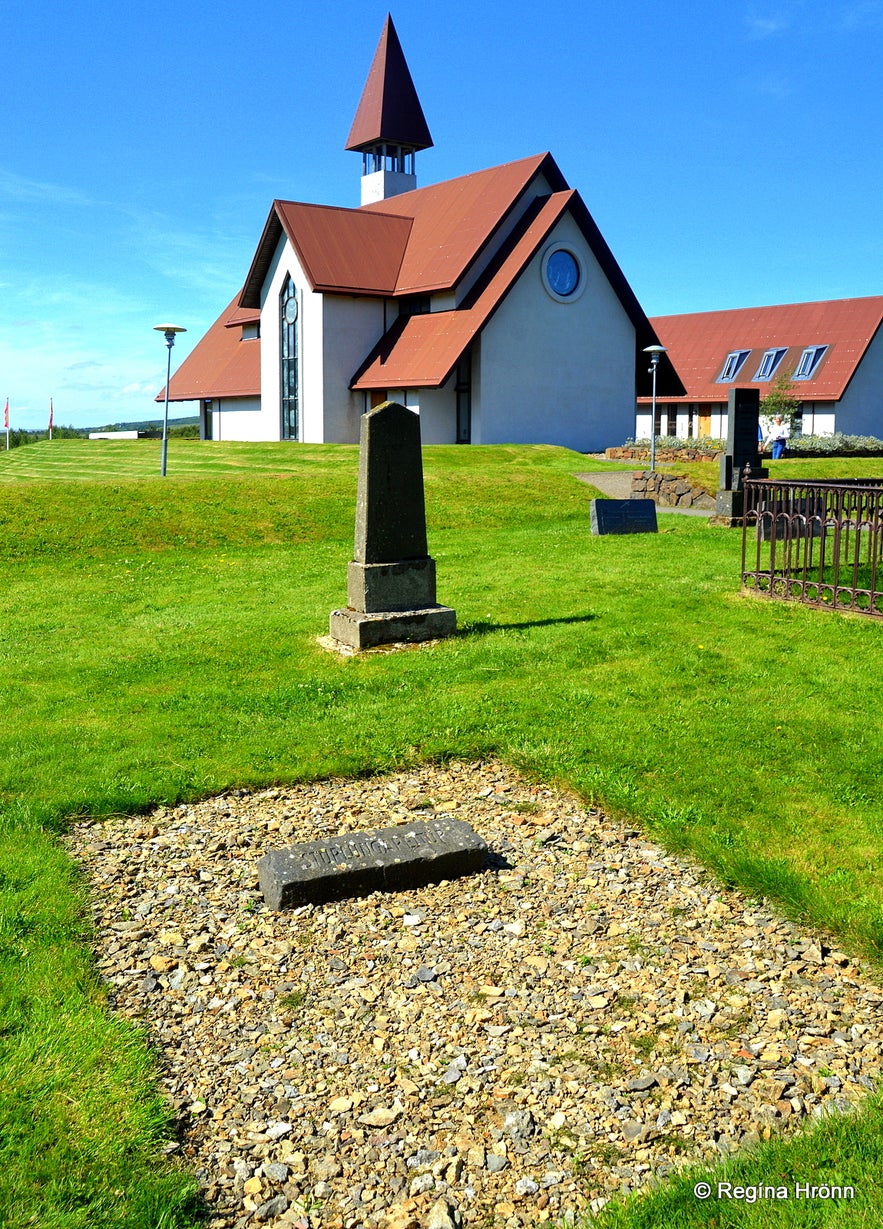
Sturlungareitur at Reykholt
In the graveyard by the old church, one can find the grave of Snorri Sturluson.
I didn't know exactly where it was located but found this energy coming from the ground, really strange, and walked straight up to his grave.
I couldn't tear myself away from the grave, the energy is so strong there, and I visited it often on my 2-day stay in Reykholt and sat by it pondering on the life and fate of this remarkable man, Snorri Sturluson.
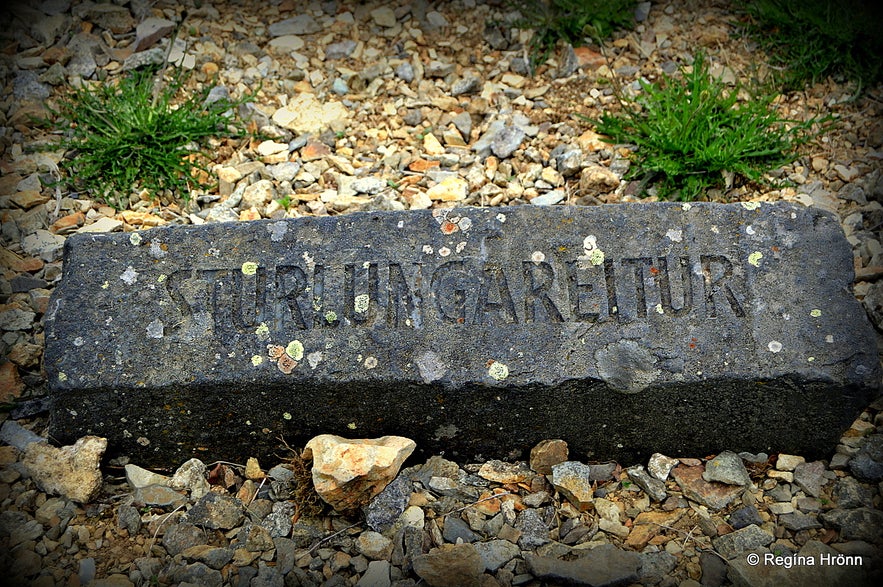
Sturlungareitur at Reykholt
More members of the Sturlunga clan are buried in this grave and a small tombstone was put on the grave in 1965.
On it is written Sturlungareitur.
Snorrastofa 
Sigrún Þormar and I by the entrance to Snorrastofa
Snorrastofa in Reykholt is an independent cultural and medieval centre, established in 1995. At Snorrastofa you will find an excellent public and research library on Snorri Sturluson and his work, and here scholars can rent facilities for workshops and conferences. Snorrastofa offers lectures on Snorri and personal guidance through the exhibition on Snorri Sturluson.
Accommodation is rented out to scholars and guests of Snorrastofa both at Snorrastofa and in the old school. I stayed there for 2 nights and can vouch for how serene and very inspiring it is staying in the old school just above the medieval hot pool of Snorri, contemplating on Snorri's life and achievements. We got a room right behind the statue of Snorri Sturluson, so we had the feeling of having him with us in our room :)
In 2013 an exhibition on Snorri Sturluson's Saga opened in Snorrastofa on the ground floor of the church, with medieval studies and research into the history of Borgarfjörður - and here at the exhibition, one can read up on the life of Snorri and how influential he really was. I got an excellent guided tour of the exhibition by Sigrún Þormar, the project leader of Snorrastofa.
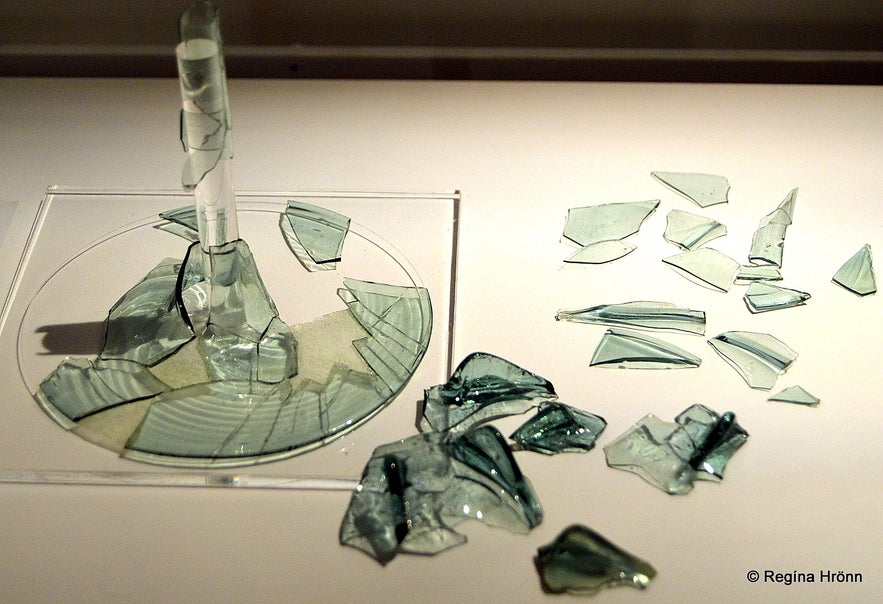
A broken beaker made of glass at Snorrastofa
On display at Snorrastofa's exhibition on Snorri Sturluson are artifacts found during the archaeological excavations, f.ex. this exquisite French-style beaker made of glass. It shows what an elegant man Snorri was, drinking from fine glasses. These finds show the multinational links Snorri had and the links to the European cultural environment.
Archaeological excavations have been done on Snorri's old farmstead at Reykholt. Some medieval buildings have been found. The curved stair, where Snorri was killed, has been found and pictures of it hang on one wall in Snorrastofa, with explanations and other pictures from the archaeological finds.
The excavations show that Snorri's farmstead was a large fortress and it is amazing seeing the drawings at the exhibition of what this fortress might have looked like.
These finds have been covered with turf as there are not enough funds to continue with this project. I would love to see them on display under glass and hope funds will be raised in the near future so that the public can see these historical treasures.
Nobody knows what Snorri looked like, but this painting of Snorri was painted by Haukur Stefánsson in 1933.
The exhibition at Snorrastofa is very well presented. The highlights of Snorri's life are projected on the floor - they appear in a circle which is in the form of Snorri's hot bath.
There are 35 circles altogether and I photographed every single circle and wrote all the highlights from the circles. So following are the highlights of Snorri's life, courtesy of Snorrastofa (my remarks are inside the brackets):
1179 - Snorri Sturluson was born at Hvammur in the Dala district in West Iceland. (There is a tall memorial stone at Hvammur in memory of Snorri Sturluson - see my photo below. The Irish settler woman, Auður djúpúðga, had settled here at Hvammur).

The monument of Snorri Sturluson at Hvammir in Dalir
1181: Snorri is taken to be fostered at Oddi in South Iceland.
1181-1196: as a child and teenager Snorri is educated at Oddi.
(Snorri was only 3 years old at the time when he went into foster care. This was caused by a conflict, which his father, Sturla, had with priest Páll Sölvason at Reykholt. Iceland's lawspeaker, Jón Loftsson, was called in to solve the conflict and as a part of the settlement, Jón offered to foster Snorri at his home, Oddi, which was one of the primary cultural centres in Iceland.
At Oddi, Snorri got a very good education and he proved to be an excellent student. Jón's grandfather was the Norwegian king Magnus the Barefoot. The photo below is of Oddi).
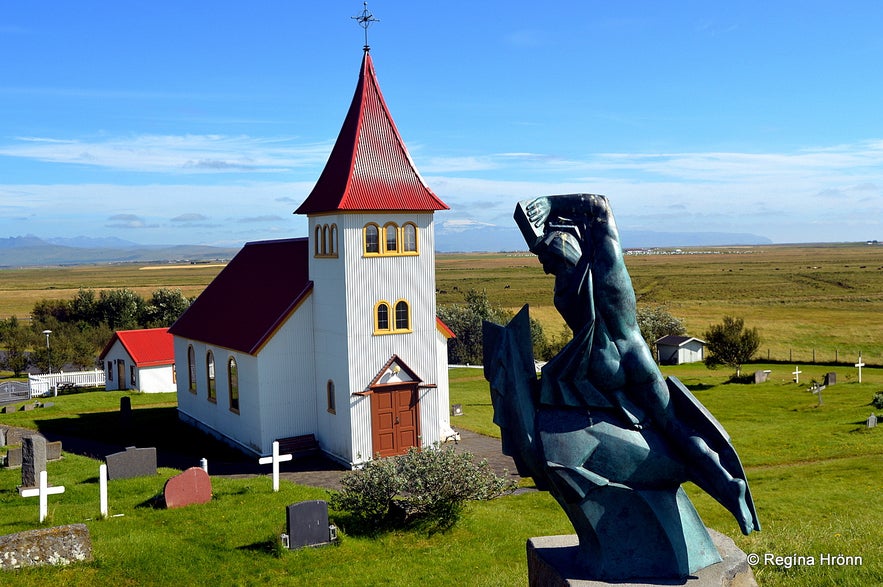
Oddi in South Iceland
1197: Jón Loftsson, Snorri's foster father at Oddi, dies.
1198: Snorri begins to engage with the politics of West Iceland.
1199: Snorri marries Herdís Bersadóttir at Borg in the Mýrar-district in West Iceland. (Borg was the former home of Egill Skallagrímsson from Egil's Saga. The photo below is of Borg).
Borg á Mýrum
1199-1201: The young couple lives under the protection of the Oddi clan in South Iceland.
1202-1205: Snorri takes on all authority on the farm Borg in West Iceland.
1206-1207: Herdís divorces Snorri.
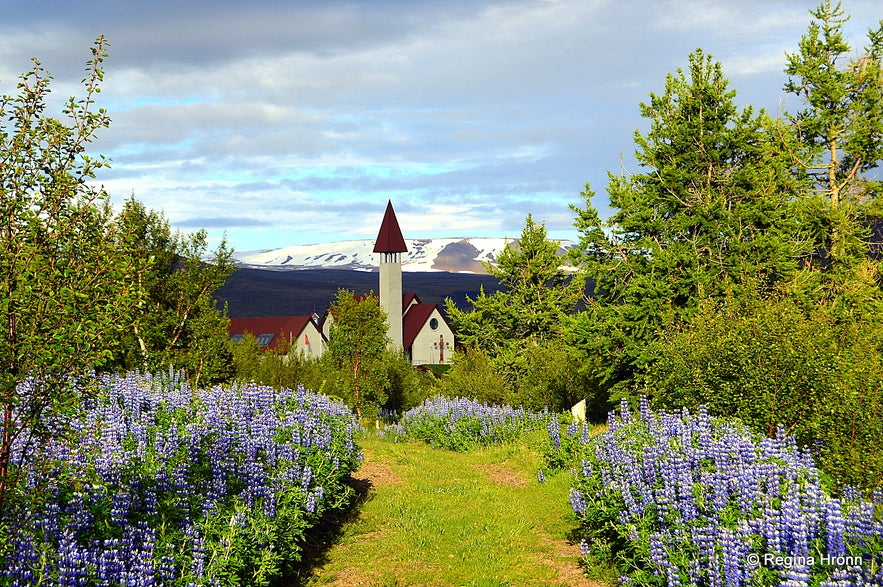
Beautiful Reykholt in the summertime
From 1206: Reykholt becomes Snorri's main home.
1209: The Battle of Hólar. Snorri brings bishop Guðmundur Arason to Reykholt.
1206-1215: Snorri's chieftainly power increases. He gained dominion in Borgarfjörður as well as many other areas in West- and North Iceland.
1216-1217: Conflict at the Althing - disagreement among the Oddi clan.
1217: Snorri comes to the Althing at Thingvellir with an army of 600 men, Norwegians among them.
1215-1218: Snorri is appointed the Lawspeaker of the Althing.
1218-1220: Snorri's first visit to Norway.
1220: Snorri prevents a war from breaking out between Iceland and Norway - He becomes the King's man.
After 1220: Snorri compiles the "Enumeration of Metres", a poem 102 stanzas long eulogizing both King Hakon and Earl Skúli of Norway.
1222-1224: Snorri lives at Stafholt. Construction of buildings and a fort of Reykholt. (The photo below is of Stafholt).
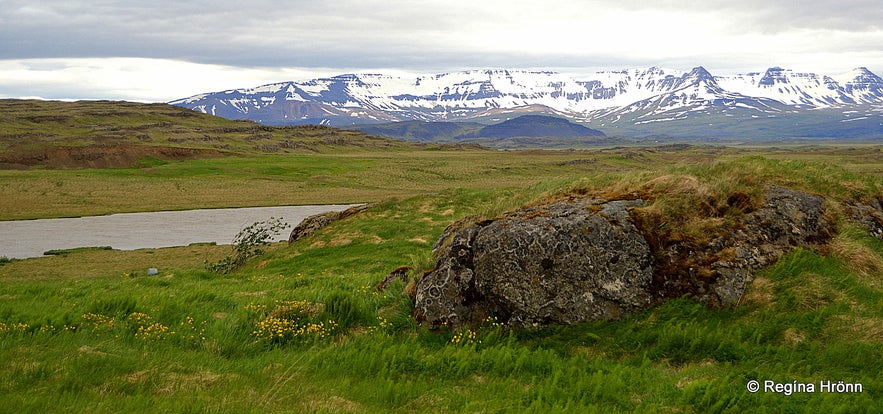
Stafholt in Borgarfjörður
1222-1231: Snorri is a Lawspeaker of the Althing for the second time.
1224: Snorri enters into a relationship with Hallveig Ormsdóttir. She becomes the mistress of Reykholt.
After 1225: Snorri's "Edda" is compiled - an instructional work on poetics, consisting of a preface and three other sections: "The Deluding of Gylfi"; "The Language of Poetry"; and the "Enumeration of Metres".
1226: Snorri establishes a convent on the island of Viðey, Reykjavík.
1231: On the 21st of January Snorri's son, Jón murtur dies in Bergen, Norway. On the 17th of July Snorri's daughter, Hallbera, dies at her mother's home in Borg.
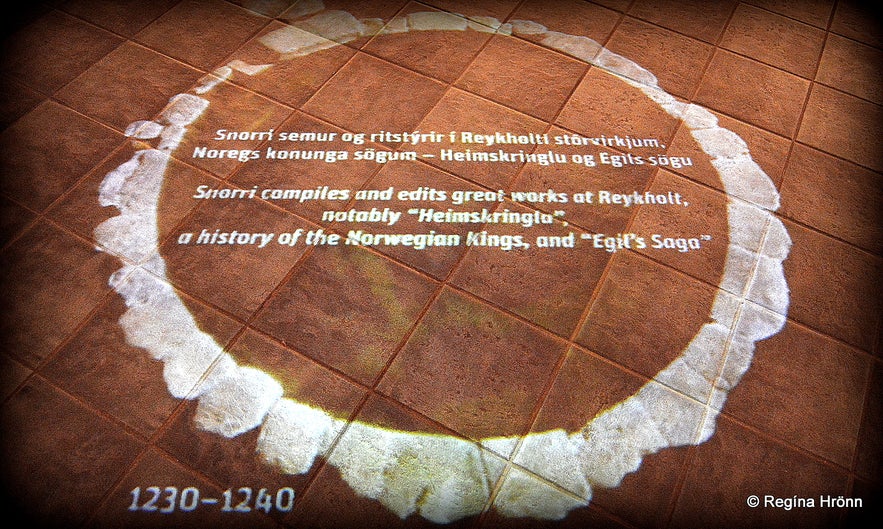
At Snorrastofa
1230-1240: Snorri compiles and edits great works at Reykholt, notably "Heimskringla", a history of the Norwegian Kings, and "Egil's Saga".
1236: Sighvatur and Sturla, Snorri's brother and nephew come to Borgarfjörður from the North with a thousand men and drive Snorri from his home, ending his chieftaincy of Borgarfjörður.
1237: Snorri's son, Órækja, makes a pilgrimage to Rome.
1237: A battle concerning Snorri's interests takes place at Bær in Borgarfjörður. Snorri was not present.
1237-1239: Snorri's second visit to Norway. He receives the protection of Duke Skúli. 1239: Duke Skúli makes Snorri an Earl.
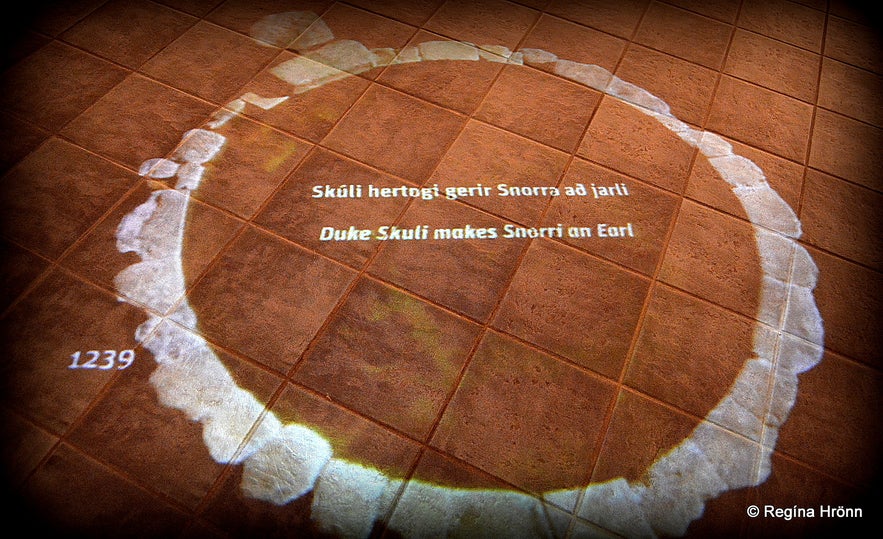
At Snorrastofa
1239: King Hakon forbids Snorri from leaving Norway and returning to Iceland.
1239-1240: Snorri returns to Iceland and proceeds to negotiate for peace in his domain.
1241: Hallveig Ormdóttir, the mistress of Reykholt, dies in July.
1241: In the autumn Gissur Thorvaldsson (Snorri's former son-in-law) plans an attack on Snorri at Reykholt at the behest of the Norwegian King Hakon.
September 23rd, 1241: "Eigi skal höggva!" - "Thou shall not strike"!
Snorri Sturluson was murdered here in Reykholt by his enemies, defenseless, in a spiral staircase leading down to the cellar. His final words were: "Eigi skal höggva!" or "Thou shall not strike!".

Eigi skal höggva - thou shalt not strike!
At Snorrastofa there is both a visitor centre and a museum about Snorri Sturluson and Reykholt and a store, where one can buy Snorri's literature, and books on Snorri Sturluson, and for example this copy of a beautiful 18-carat gold ring, which was found during the archaeological excavations in 2005.
Is this Snorri's ring?
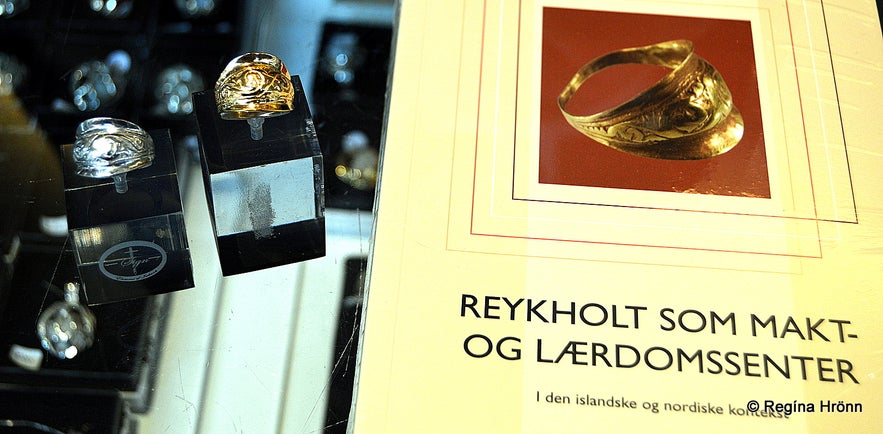
The ring found at Reykholt
The original ring is kept at the National Museum of Iceland. A copy of the ring can only be bought at Snorrastofa and at the National Museum of Iceland.
This ring is ever so popular and sells like we Icelanders say "heitar lummur" ;) I would not mind owning such a beautiful ring.
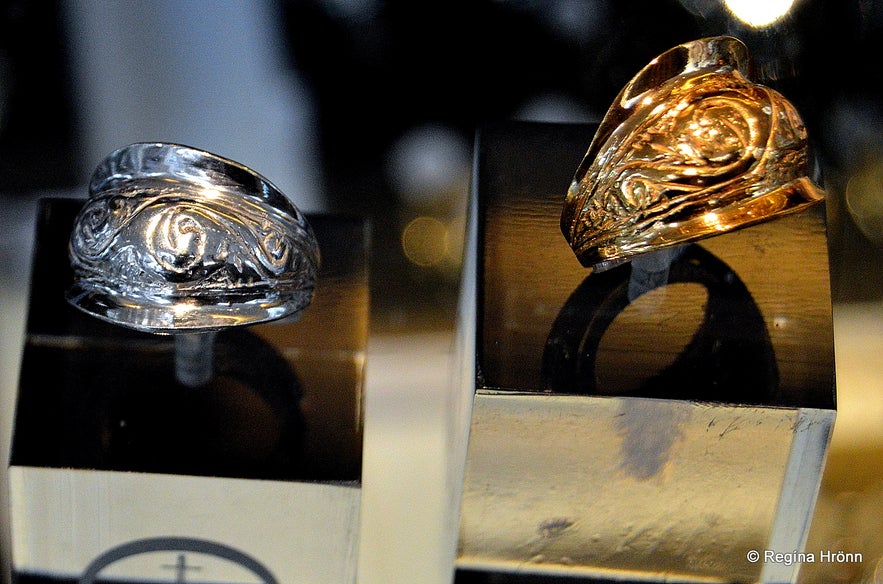
The replica of the ring found at Reykholt
Snorri was the most noteworthy man of the Nordic countries and Reykholt has been called the Mekka of the Norwegians. I am sure that the majority of Norwegians visits Reykholt during their stay in Iceland.
I joined a group of Norwegians who were eager to visit Reykholt and I could see that it was a moving experience for them.
There is a statue of Snorri Sturluson in Reykholt, by Gustav Vigeland, who was Norway's most famous sculptor. In 1947 Olav V, the crown prince of Norway back then brought this statue as a gift from the Norwegian nation.
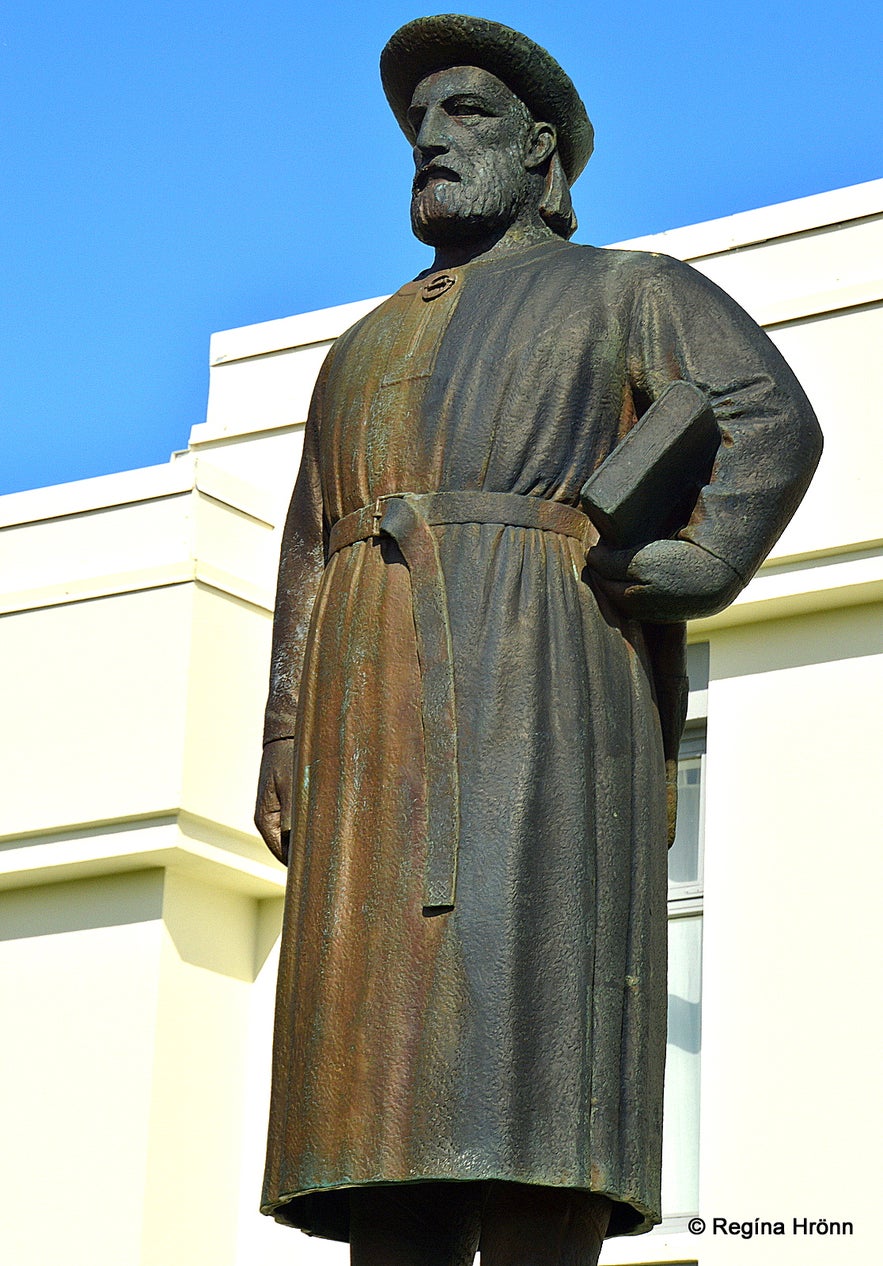
The statue of Snorri Sturluson
Snorri was married twice, to Herdís and then Hallveig, and had two children by Herdís and 2 stepsons by Hallveig. Snorri also had children with 3 other women; Guðrún, Oddný, and Þuríður.
According to Íslendingabók (the Icelandic Book of Relations), Snorri Sturluson was my ancestor:
Snorri Sturluson 1179 - 23.09.1241 and Oddný 1180
Þórdís Snorradóttir 1205
Einar Þorvaldsson 1227 - 1286
Ónefnd Einarsdóttir 1250
Eiríkur Sveinbjarnarson 1277 - 1342
Einar Eiríksson 1320 - 1382
Björn "Jórsalafari" Einarsson 1350 - 1415
Kristín Björnsdóttir 1374 - 1468
Sólveig Þorleifsdóttir 1415 - 1479
Jón Sigmundsson 1455 - 1520
Helga Jónsdóttir 1511 - 1600
Jón Kráksson 1533 - 1622
Sturli Jónsson 1590
Jón Sturluson 1625 - 1700
Einar Jónsson 1676 - 1745
Guðríður Einarsdóttir 1726 - 1772
Oddur Guðmundsson 1770 - 1841
Svanborg Oddsdóttir 1814 - 1877
Helga Ásmundsdóttir 1841 - 1910
Ásmundur Sigurðsson 1868 - 1919
My grandfather 1903 - 1977
My father 1942 - 2008
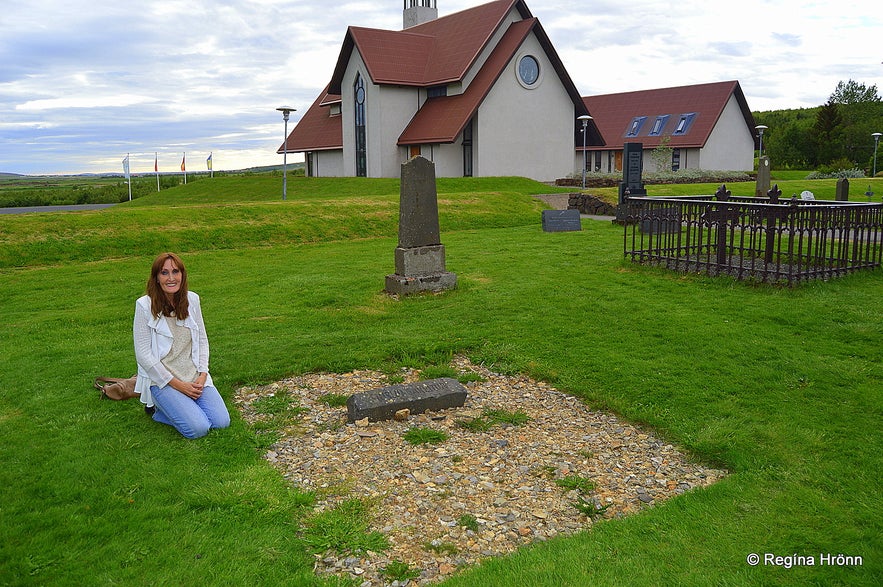
Regína Hrönn 1965
Reykholtskirkja church
The stained glass windows in Reykholtskirkja church
You will find a rectory at Reykholt and two churches, the older church of Reykholt, built in 1897, which served as a parish church for 100 years, and the new church, which was consecrated in 1996.
The new church plays a second role as a concert hall as it has got excellent acoustics. I was lucky to be able to listen to a beautiful concert during my stay in Reykholt when a Danish choir visited Reykholt.
I visited Reykholt at the end of June, but at the end of July, an annual music festival is held - Reykholtshátíð or the Reykholt Chamber Music festival.

The stained glass windows in Reykholtskirkja church
The award-winning stained glass windows in the new church at Reykholt are ever so beautiful and one of a kind. They were made by the Icelandic artist Valgerður Bergsdóttir.
They are extraordinary as there are no real colours in them, the glass is transparent and mixed with metals and they change colours in accordance with the light shining upon them.
There are 4 windows of this kind in the church and 2 of them are distinct as the artist focuses on the written word, and written on the windows is an old Icelandic poem called "Sólarljóð" or the Poem of the Sun, and the Gospel of John.
Sigrún in the traditional costume upphlutur by Fitjakirkja church in Skorradalur
The project leader of Snorrastofa is my fellow travel-blogger on Guide to Iceland, Sigrún Þormar. You can check out her blog for in-depth information on Snorri and Reykholt.
She is a lovely lady, so knowledgeable and enthusiastic about Snorri Sturluson and Reykholt.
Do pay her a visit at Snorrastofa for a guided tour of the exhibition on Snorri Sturluson.
Reykholt is so rich in history and I feel privileged to have been able to spend 2 days at this wonderful historical place.
Have a lovely time at Reykholt :)

